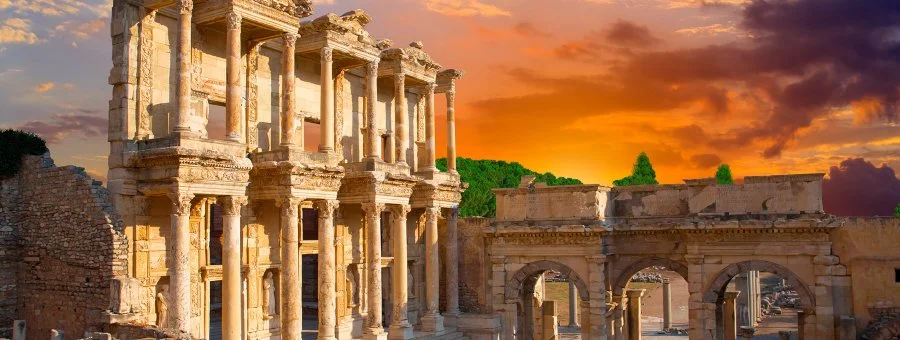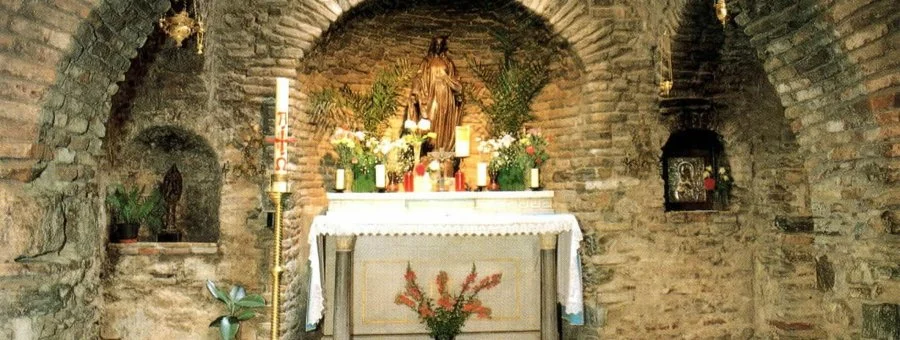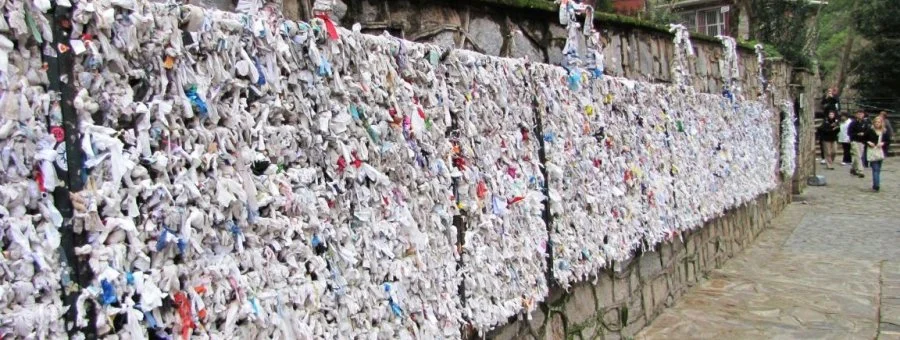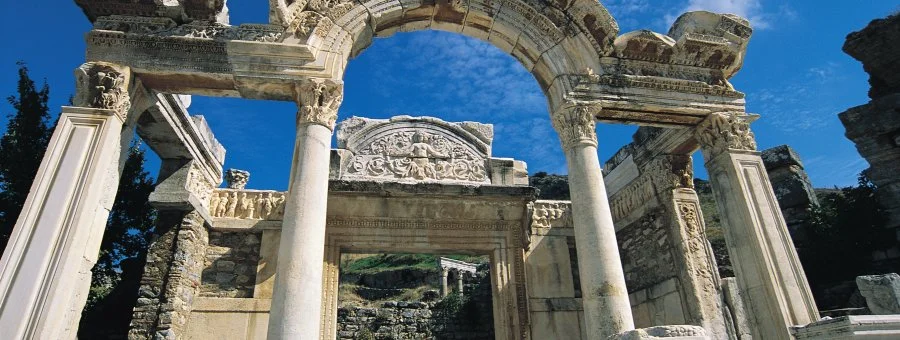Ephesus
Ephesus (hethitisch Apasa; altgriechisch Ἔφεσος; türkisch Efes) war eine Stadt im antiken Anatolien. Während der Zeit des klassischen Griechenlands befand sie sich in Ionien, wo der Fluss Cayster (Kucuk Menderes) in die Ägäis mündet. Sie gehörte zum Ionischen Bund. In Ephesus befand sich eine der sieben Kirchen Asiens (die in der Offenbarung des Johannes der Täufer erwähnt werden), und das Johannesevangelium könnte hier geschrieben worden sein. Es ist auch der Ort eines großen Gladiatorenfriedhofs. Die Stadt war berühmt für den Artemis-Tempel (fertiggestellt um 550 v. Chr.), und beide wurden 263 von den Goten zerstört. Kaiser Konstantin baute große Teile der Stadt wieder auf und errichtete ein neues öffentliches Bad. Die Stadt wurde 614 erneut teilweise durch ein Erdbeben zerstört. Die Bedeutung der Stadt als Handelszentrum nahm ab, als sich der Hafen langsam mit Schlamm aus dem Fluss füllte. Die heutige archäologische Stätte liegt 3 Kilometer südlich des Bezirks Selcuk in der türkischen Provinz Izmir. Die Ruinen von Ephesus sind eine beliebte internationale und lokale Touristenattraktion, was teilweise auf ihre gute Erreichbarkeit vom Adnan Menderes Flughafen und über den Hafen von Kusadasi zurückzuführen ist.





